“Are you getting a copy of Dinosaur World?”
I was talking to my buddy Kev about games our review crew was going to play in the month of March. I like to mix the review copies I get from Meeple Mountain with games from our group’s personal collection, because it’s not always possible to get a review copy of new games from our publishing partners.
I had been intrigued by Dinosaur World, from Pandasaurus Games (Wild Space, That Time You Killed Me, and of course the many other games/expansions in the Dinosaur Island space), but didn’t have the cash to shell out for another round of dinosaurs.
“No,” I said. “But, if you’ve got a copy…”
“Yep, I’ve got a copy, even with some extras,” Kev replied. “Let’s get it to the table!”
So, we did. And I’m glad we did. Dinosaur World is great and builds on many of the same ideas that were successful in the other 2 main games in the “Dinoverse”, the name of the collective Pandasaurus universe of dino-games: Dinosaur Island, Dinosaur Island Rawr ‘n Write, and Dinosaur World.
If this can be believed, the biggest takeaway from Dinosaur World is its size. I have a Game Topper for my game room (3 feet wide by 6 feet long) and it is normally enough for any game I play.
Dinosaur World barely accommodates 4 players thanks to all of the tile laying you will do during play. This massive table hog left me in the place I expected: as fun as Dinosaur World is, it is not my favorite game in the series thanks to the Tyrannosaurus-sized footprint.
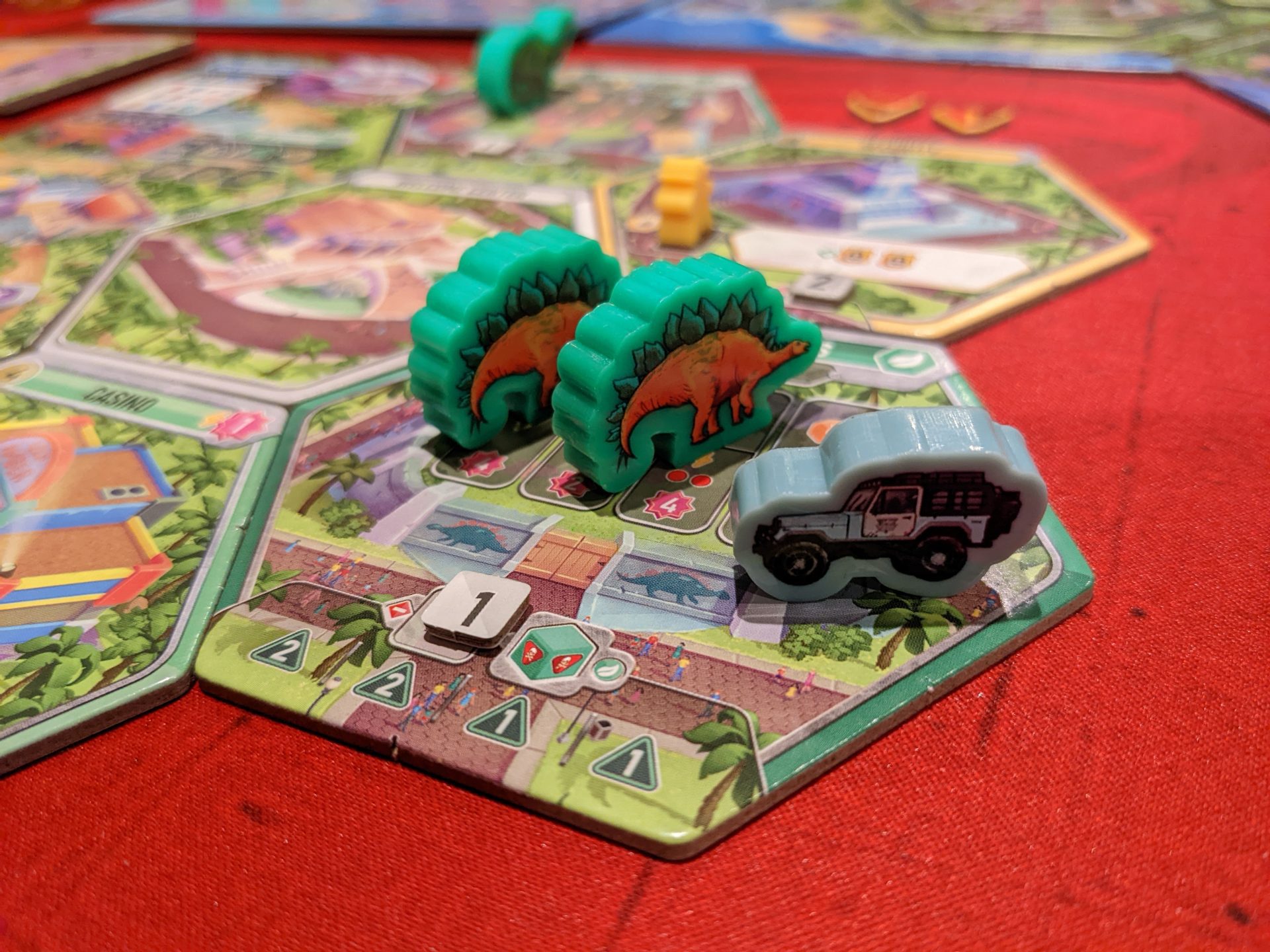
Jurassic Park, Streamlined (Sorta)
Like its predecessors, Dinosaur World puts players in the shoes of burgeoning entrepreneurs aiming to build the best dino theme park over a 5-round experience.
You’ll hire workers, take actions to build out your park, then complete actions on your player board to set up a tour of your park, building excitement along the way through successive turns. All three of the Dinoverse games focus heavily on park safety; you always want to make sure you’ve got the threat of great dinosaurs and thrills, but enough security to cover your asphalt when the end of each round comes around. Otherwise, park visitors are toast!
Dinosaur World simplifies many steps that I thought were a bit of a stumble in Dinosaur Island. In Dinosaur World, round steps are easy to teach but thinky, especially as you plan out how to run your “Jeeple” (the game’s term for your wooden Jeep playing piece) on a tour of your personal theme park. Before that, you’ll take steps that are quite easy.
First, you’ll need to hire workers. Even though it sounds like it should be complicated to hire a collection of 9 workers from different fields, Dinosaur World doesn’t let you do any work. You simply pick one of the available cards in a face-up draft.
Each card has 9 workers on it: 4 basic, non-skilled workers, then 5 more workers from an assortment of 4 types of specialists, such as scientists, security experts, etc. After pulling your 9 workers to your player area, you’ll take actions on 3 large boards full of tiles and dice—
Oh, wait. Let’s make sure we call out those dice.
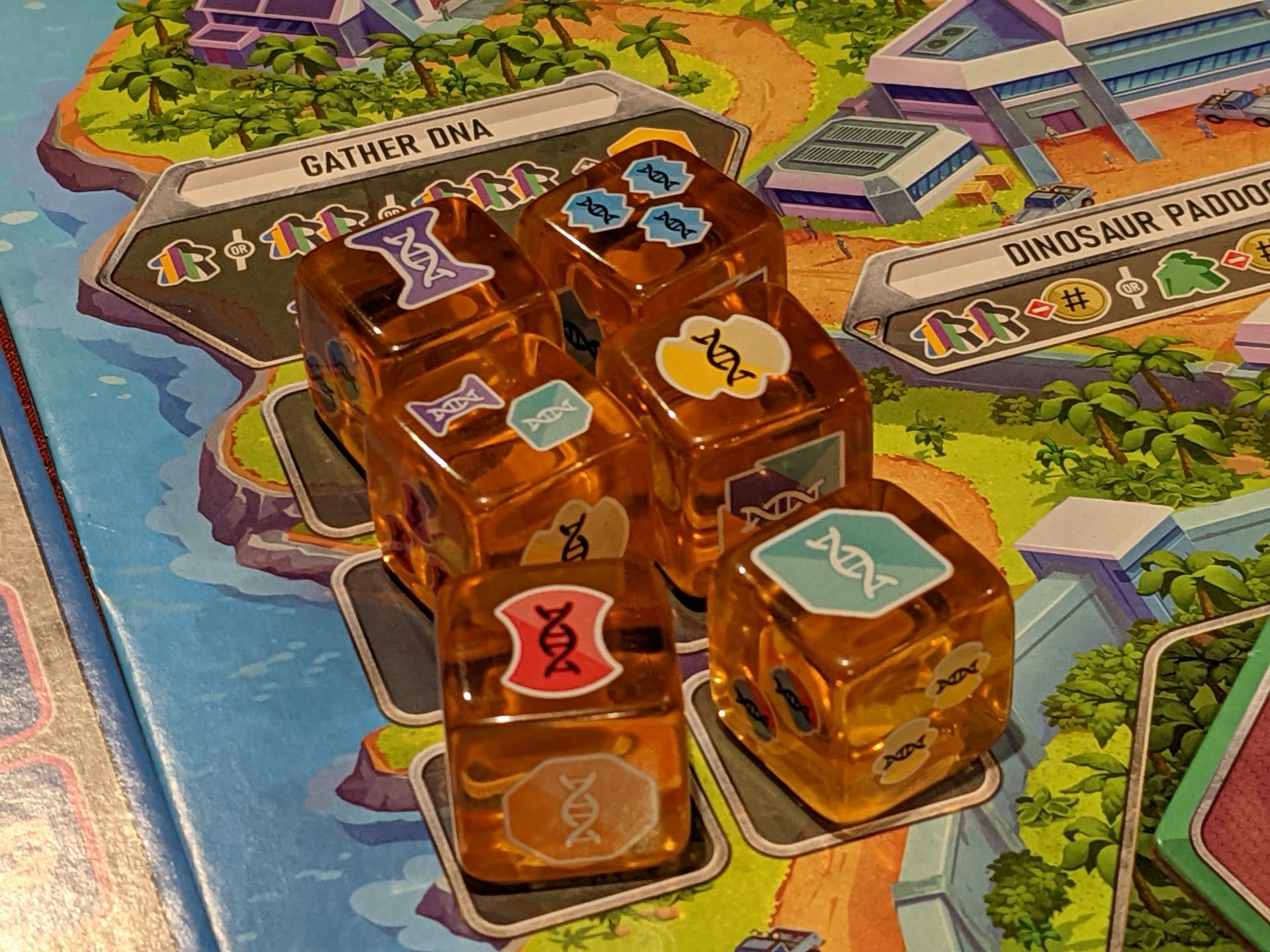
The Dinoverse is many things to many people, but everyone I’ve played these games with agrees on one thing: these are the greatest dice in dice history. They feel great in the hands, have a satisfyingly chunky feel to them, and for reasons that only the Dinoverse (and the film series) can explain, they are an amber color that stand out no matter where they happen to be on your table.
The dice always have something good for players when they are drafted. Putting the dice in a wooden dice tower, listening to them roll to the end of the chute, putting them back in the ridiculously oversized dice drafting bag…man, you can’t go wrong with these dice!
Sorry. Had to pause and talk dice. But if you’ve played any of the Dinoverse games, you know I’m right!
The second phase of the game features a mix of drafting dice to take resources, and buying tiles using your workers and cash. This is where you’ll set up your next phase by stockpiling a bunch of DNA to build dinosaurs, add dinosaur paddocks to your player area, and build special buildings and attractions to gather opportunities for game-breaking abilities as the game goes along.
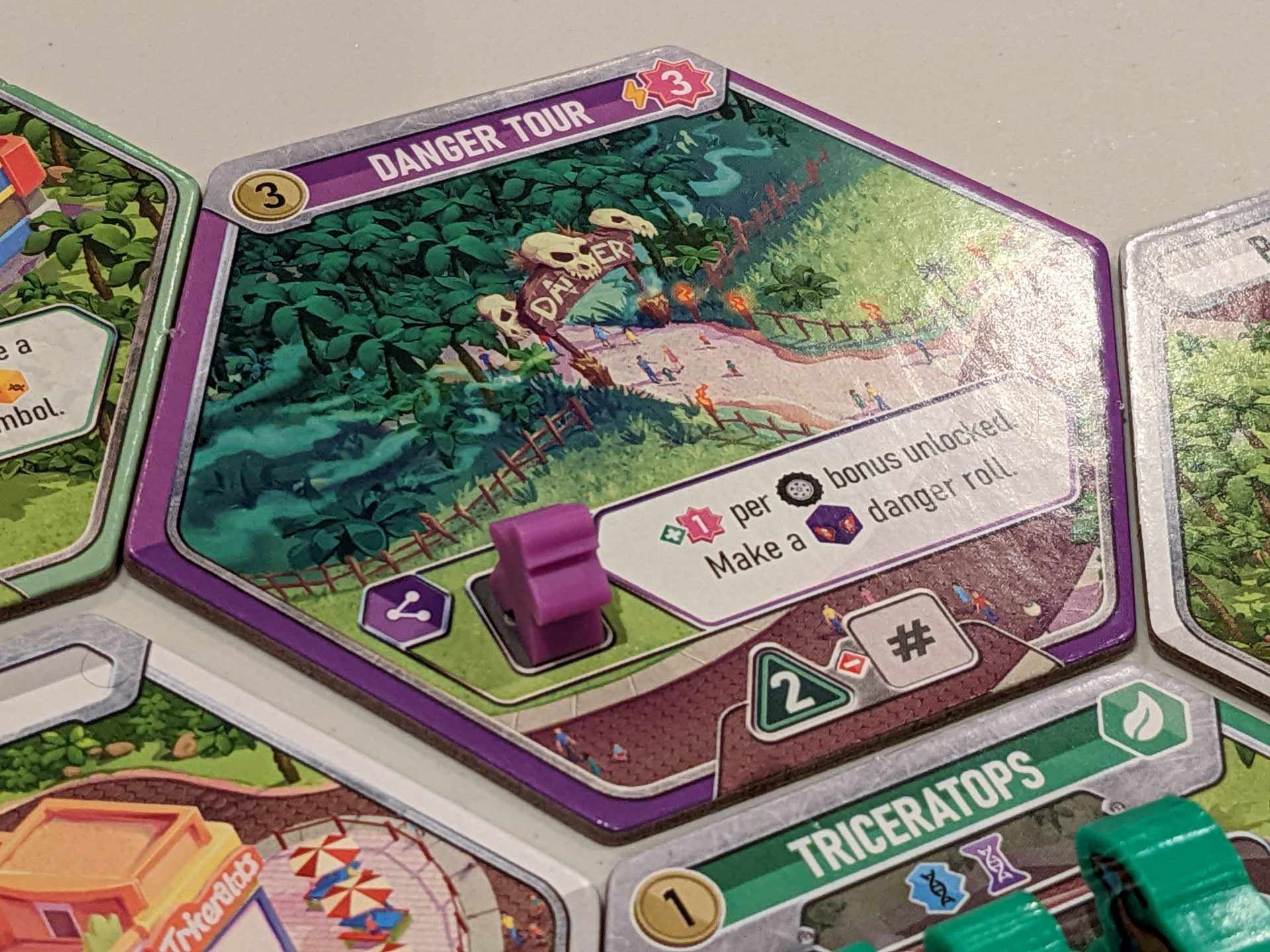
And this is where Dinosaur World breaks away from the other two Dinoverse games: it’s a tile-and-route-building game, and the variability comes in many forms thanks to three public goal/milestone cards each player is working towards. This also enlarges the game’s footprint considerably, as players place hexagonal tiles from their player board’s Welcome Center to build a considerable tableau across a table.
Once you’ve finished drafting dice and tiles, and taking private actions on your player board , you’ll run your tour, scoring points, cash, and/or excitement along the way.
You can go through tiles you’ve toured in previous rounds, but diminishing returns means less excitement in future turns thanks to Boredom tokens which, well, make it seem like visitors are just not as excited to see the roller coasters or the food court every time they visit your park. (This point is debatable; when I go to theme parks, I do the same rides and the same attractions every time if I know they are good. But, board games.)
Excitement scores players cash to spend the next round. Five rounds later, the game is over. Tally up those scores, subtract points for any dead guests (yes, this will happen), and declare one player the winner!
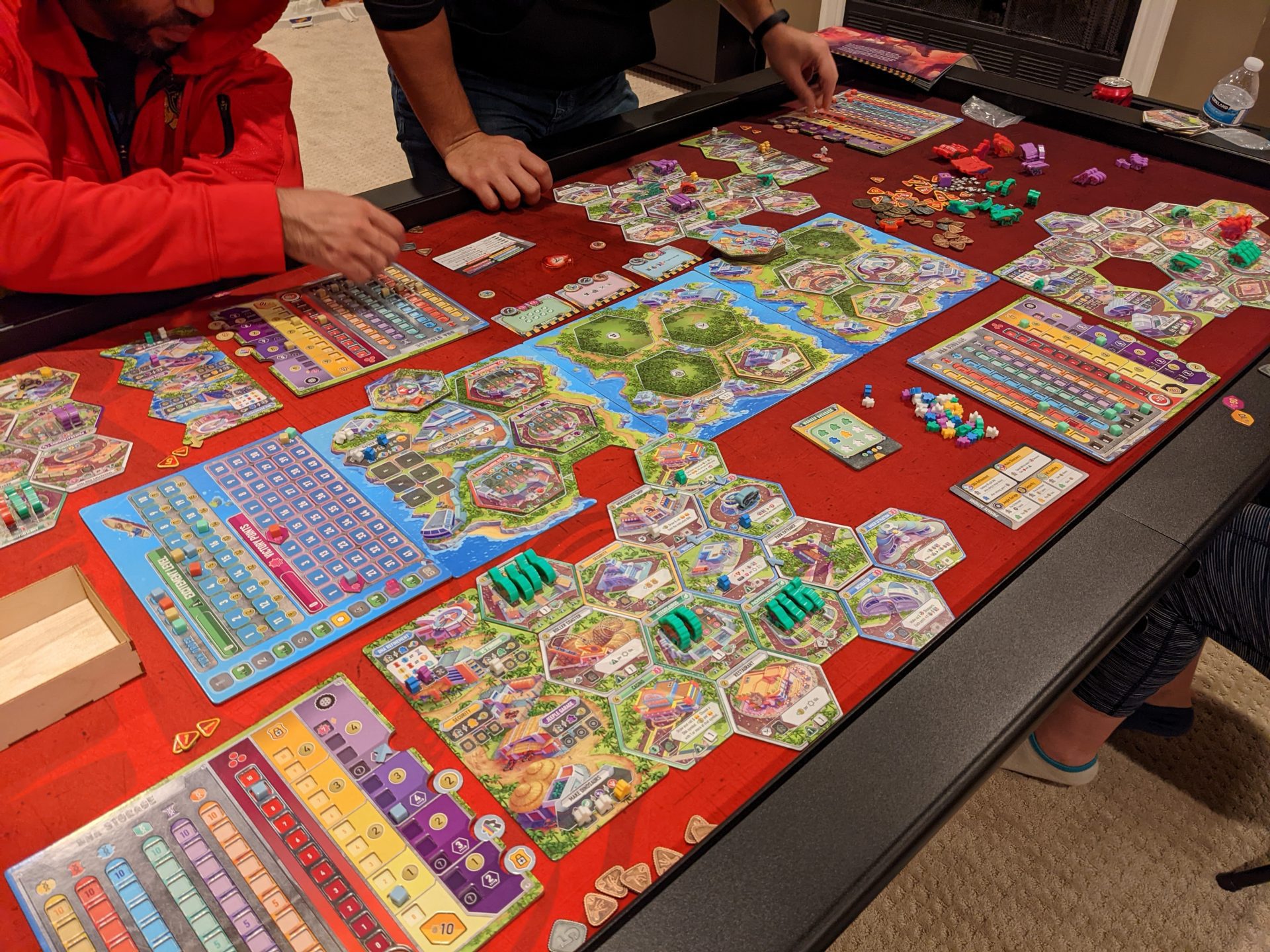
The Big Negative? The Bigness
There’s really no way around it: Dinosaur World carries a big stick. It also requires a big table. That’s because almost everything in the game is just too big. (Except the dice. They are too big as well, but oversized dice are OK in my book.)
There are three boards full of tiles. I’m not sure they needed individual boards, but here we are, and as a result, the center of your table is the market of tiles available on each turn. The tiles themselves are also too big, but this part is tricky: the special building tiles—loaded with icons and text that need to be read across a table—need to be a little larger to read everything, but the attraction and paddock tiles really don’t.
This creates a number of problems. You need to be in a well-lit room. You need to not be 47 years old and suffering from near-blindness. (Maybe that’s just my problem.) You need to NOT play this at a bar or game cafe that doesn’t have large tables. This is a tight game on a 6-foot long, 3-foot wide table, as noted previously. At one friend’s house, Dinosaur World required a small poker table on the side to hold all the stuff.
Oh, right—the stuff.
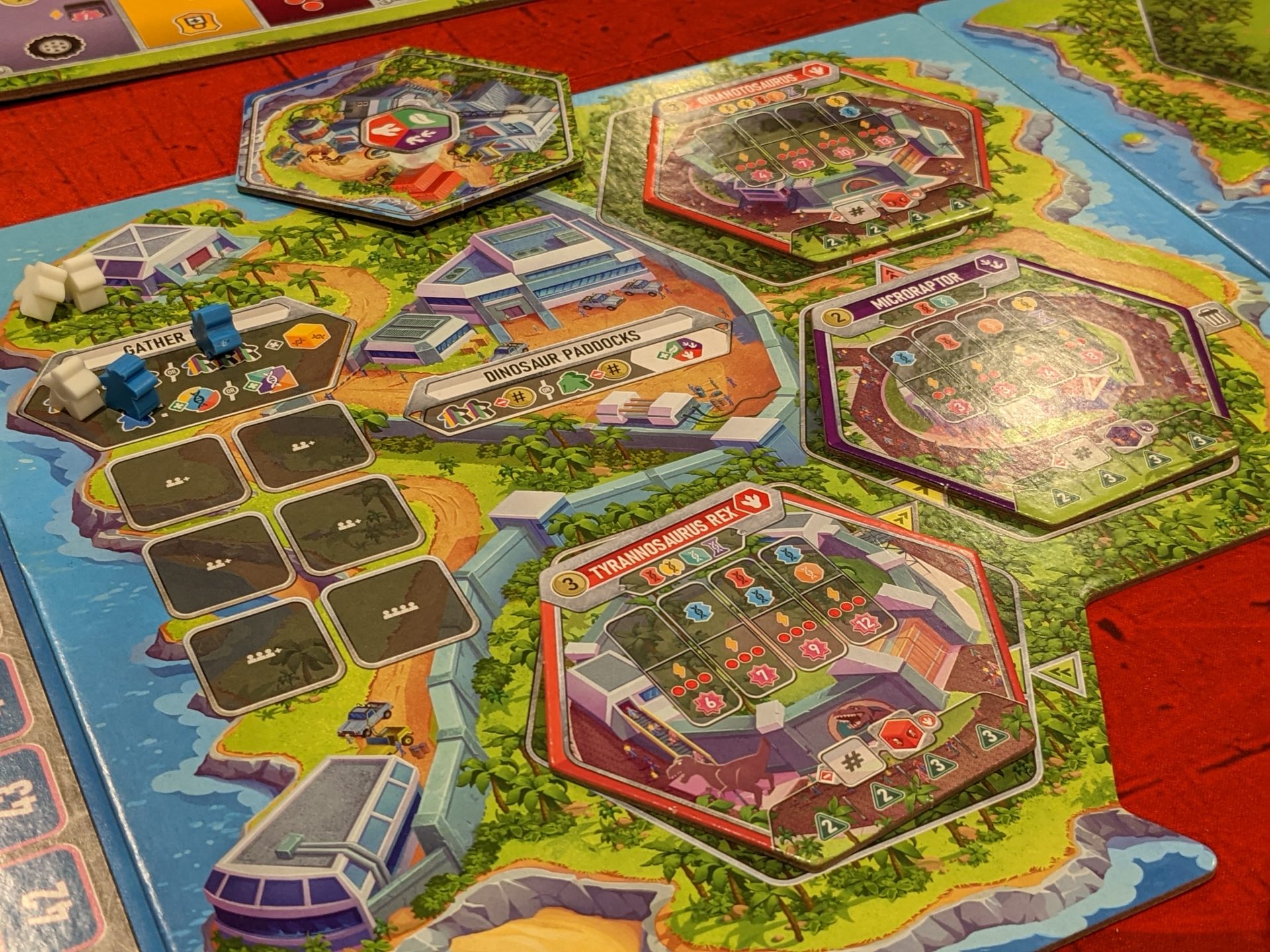
Dinosaur World has 17 different types of dino meeples (the deluxe version that I’m using for review does, anyway; the retail version just uses a single type of green wooden dino-meeple to represent all the herbivores in the game). In many ways, that’s cool. Or, it’s cool until someone says,
“Can you hand me 2 Dilophosaurus meeples?”
Which then leads to someone looking at the rulebook and sorting through all the dino-meeples in the supply for what you need. Then, you’ve got lab boards (one half of your player area), which don’t track deaths. Luckily, there are chits to track deaths separately. Also, you have a park board, which is where you place your workers to take private actions. Then players will have to add the hex tiles to build out their tableaus of buildings.
You’ll move into On Mars territory quickly; by that, I mean “massive table hog.” There’s cash—and man, the metal coins in the Kickstarter edition are pretty nice. Still, that’s more stuff. You have to track Boredom on each visited tile, and these Boredom tokens are surprisingly NOT double-sided. So, you’ll have to constantly exchange 1s for 2s for 3s throughout the game. And then there are separate dice to roll whenever you drive your Jeeple through a paddock tile, which may result in additional dead bodies.
And for my third and final review play, we added the Dinosaur World: Ice Age Pack expansion content, and you won’t believe this, but that added even more: extra dinosaurs, extra tiles, extra dice.
It’s a lot.
Now, here’s one set of stuff that is NOT in Dinosaur World: Specialist cards, which were so good in the previous Dinoverse games (although they are here in the solo game, strangely). I like that getting specialized workers has been streamlined here. I need someone better at making me money? I need green meeples. That’s great. But the Specialists are so good and add so much variety to every playthrough.

The Verdict
Meeple Mountain reviewed Dinosaur Island back in 2018 and we came away impressed; I reviewed Dinosaur Island Rawr ‘n Write recently and I love it. With Dinosaur World, an interesting thought occurred while getting in some plays prior to writing this review:
Dinosaur World is a lot of fun, but it is much more likely that I pull down Dinosaur Island: Rawr ‘n Write to play because it’s so much easier to set up and play right away.
Let’s confirm this much: if you have Dinosaur Island, I think Dinosaur World is the better game and I’d replace Dinosaur Island with Dinosaur World if I had all the money in the world. If you don’t have any of the Dinoverse games, you are looking for an excellent Jurassic Park simulator AND you have a large table and the time to regularly get in a 2-hour experience, Dinosaur World is an excellent choice.
However, if you want to get 75% of the Dinoverse experience in a game that gives you most of the guts of Dinosaur World (running tours, gaining Excitement, building paddocks, building special buildings, and rolling those amazing amber dice), Dinosaur Island Rawr ‘n Write is the definitive Dinoverse game.
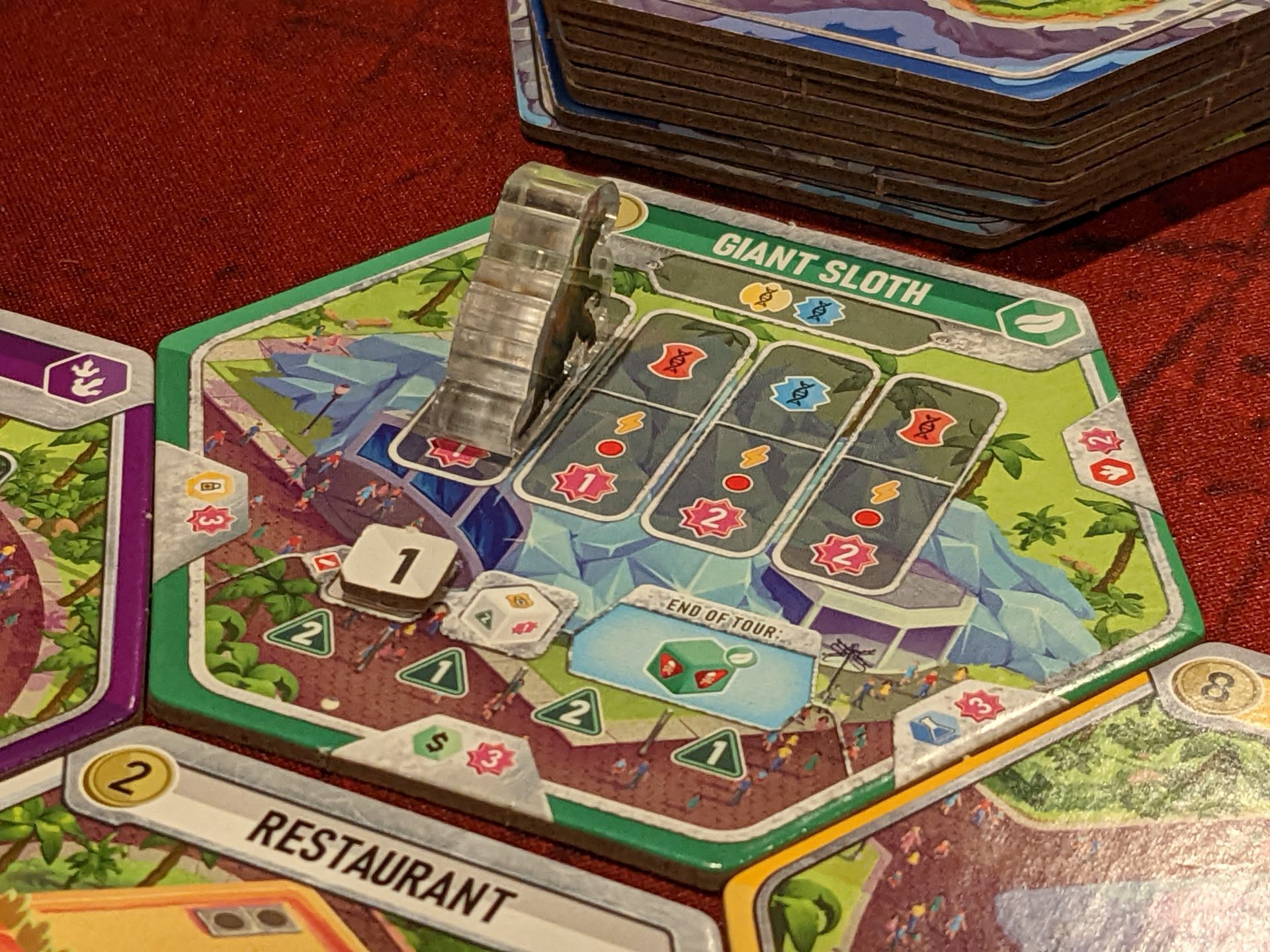
This is especially true when you consider solo play. I only played Dinosaur World once solo for this review, and that was enough to confirm what I already guessed: Dinosaur Island Rawr ‘n Write is simply the better game for a single player, mainly because there is no setup/teardown time. You can get all of that Dinoverse magic in about 20 minutes. It took me about 75 minutes to set up, play solo, and put away Dinosaur World.
That’s too long for a solo game. As a parent, I approach the gaming experience more and more from an accessibility mindset: what game is the easiest one to get to the table? Which game offers nice, crunchy decisions with a setup, play and teardown time in under an hour? What gives me chances at near infinite replayability? Which one will my wife play with me more consistently?
These are the questions I ask, but I get that for some people, roll-and-write games are not for them. Some players can also hurdle the challenge of getting a big game to a big table with ease; in that case, I think Dinosaur World is going to fit best.
The Dinoverse games have all provided fun for me and my fellow gamers, so all of them come highly recommended. I wonder, though: have we reached the end of the Dinoverse?


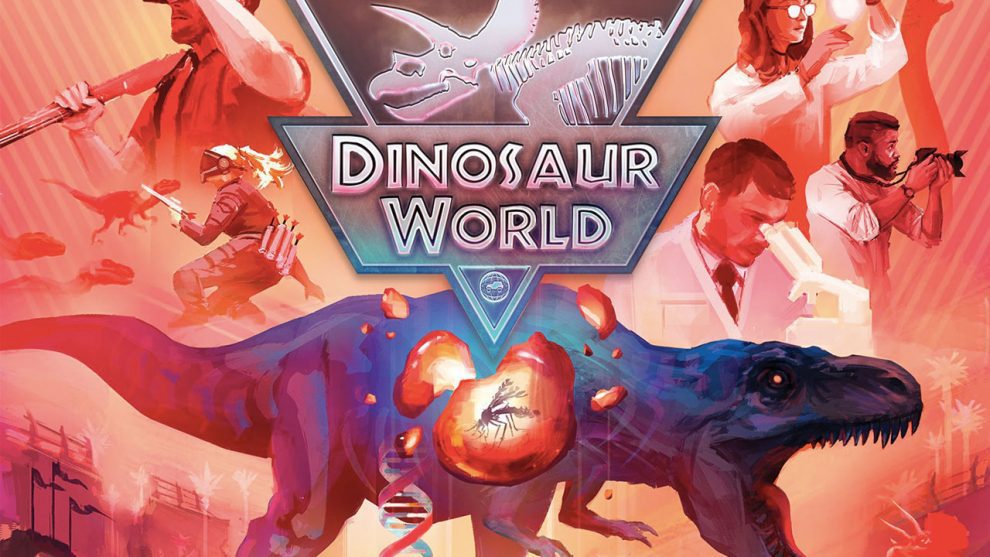


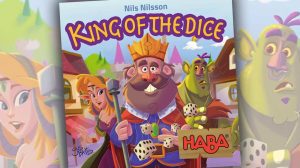






Add Comment